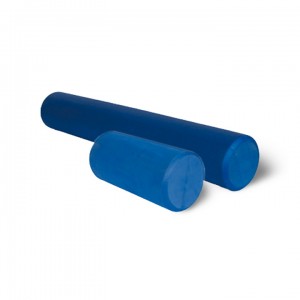Foam Rolling At Home
 Foam rolling is a self massage technique used to help release tight muscles and trigger points. Using a foam roller allows you to apply pressure and compression to specific points on your body which help to “break up” muscle knots, improve blood flow and aid in the recovery of muscle function. Healthy muscles are elastic, healthy and pain free.
Foam rolling is a self massage technique used to help release tight muscles and trigger points. Using a foam roller allows you to apply pressure and compression to specific points on your body which help to “break up” muscle knots, improve blood flow and aid in the recovery of muscle function. Healthy muscles are elastic, healthy and pain free.
One of the most popular types of massages is a deep tissue massage. The goal of a deep tissue massage is to release chronic muscle tension. The focus is on the deepest layers of muscle tissue, tendons and fascia, which is the protective layer surrounding muscles, bones and joints.
It is always recommended to consult with your healthcare practitioner before you start to introduce a new therapy such as the use of a foam roller. Craig Lawrence, a registered massage therapist at Diversified Health encourages the use of foam rollers between scheduled therapy sessions. Using a foam roller in between your regular massage sessions helps maintain the health of your muscles, by prolonging and nurturing the work that was achieved during your massage session.
Deep compression, by rolling on a foam roller helps to break up and relax tight muscles. The goal of massage therapy or foam rollers is to release trigger points, allow normal blood flow to return, re-establish proper movement patterns and allow the user pain free movement.
Using a foam roller, allows the user the ability to control the healing and recovery process by applying pressure in precise locations. To foam roll properly:
1. Apply moderate pressure to a specific muscle or muscle group using the roller and your body weight
2. Roll slowly, no more than one inch per second
3. Pause for several seconds and relax as much as possible for areas that are tight or painful – after 5-30 seconds the muscle will relax and the discomfort or pain should lessen
4. If an area is too painful to apply direct pressure, use the roller on the surrounding area and talk to your practitioner
5. Do not use foam rollers directly on a joint; the foam roller is meant for muscles and connective tissue only
6. Wait 24-48 hours before focusing on the same area
The foam roller works the same way as a massage, by breaking up the fibrous tissue that has built up so you have better circulation flow, which in turn, reduces soreness.
Remember that the foam roller isn’t a substitute for a practitioner when you’re injured. If your muscles or tissues are inflamed, don’t use a foam roller, you can cause more damage to your body.
If you have any questions regarding the use of foam rollers, please contact Craig Lawrence, RMT at 250-382-0018.

